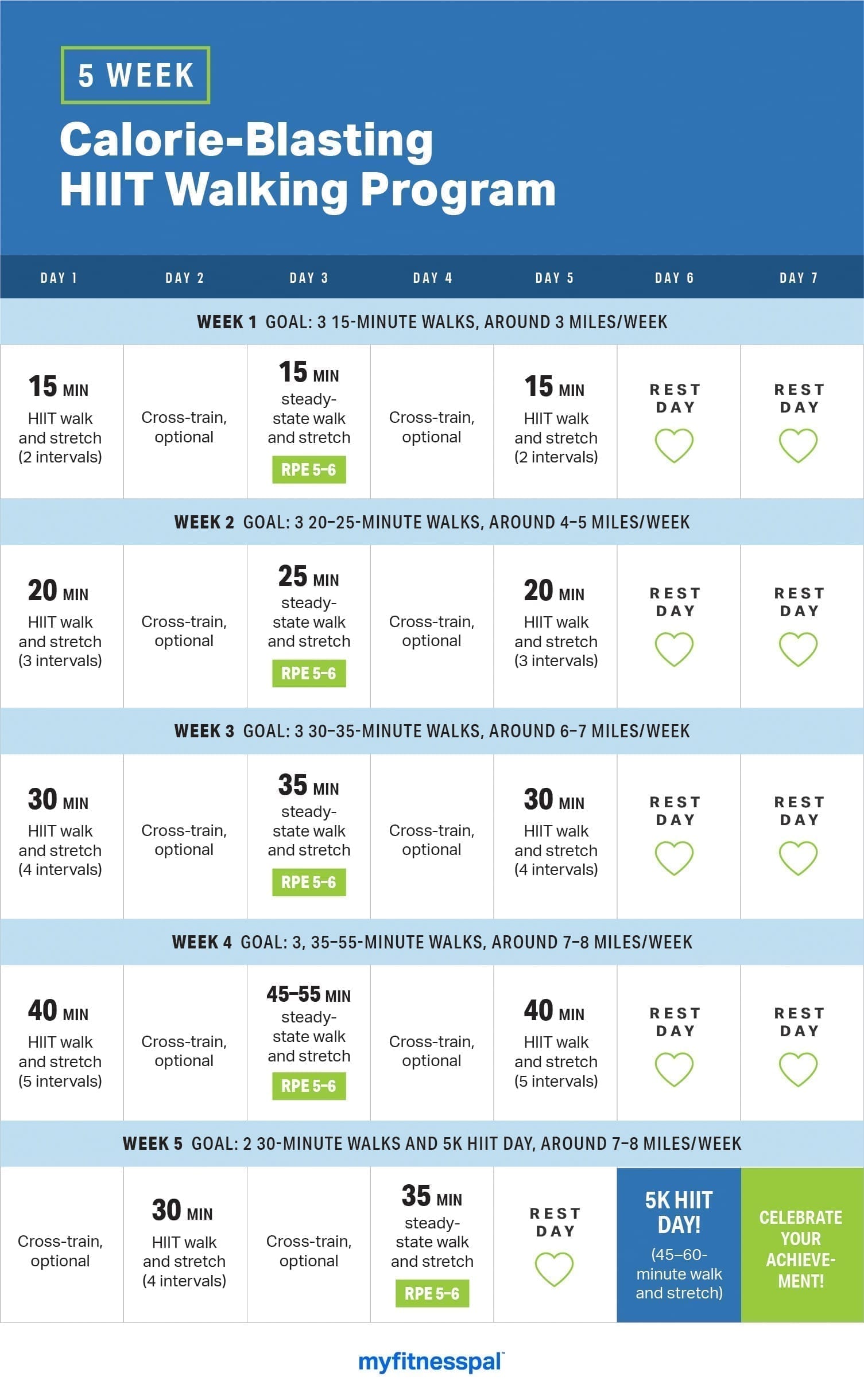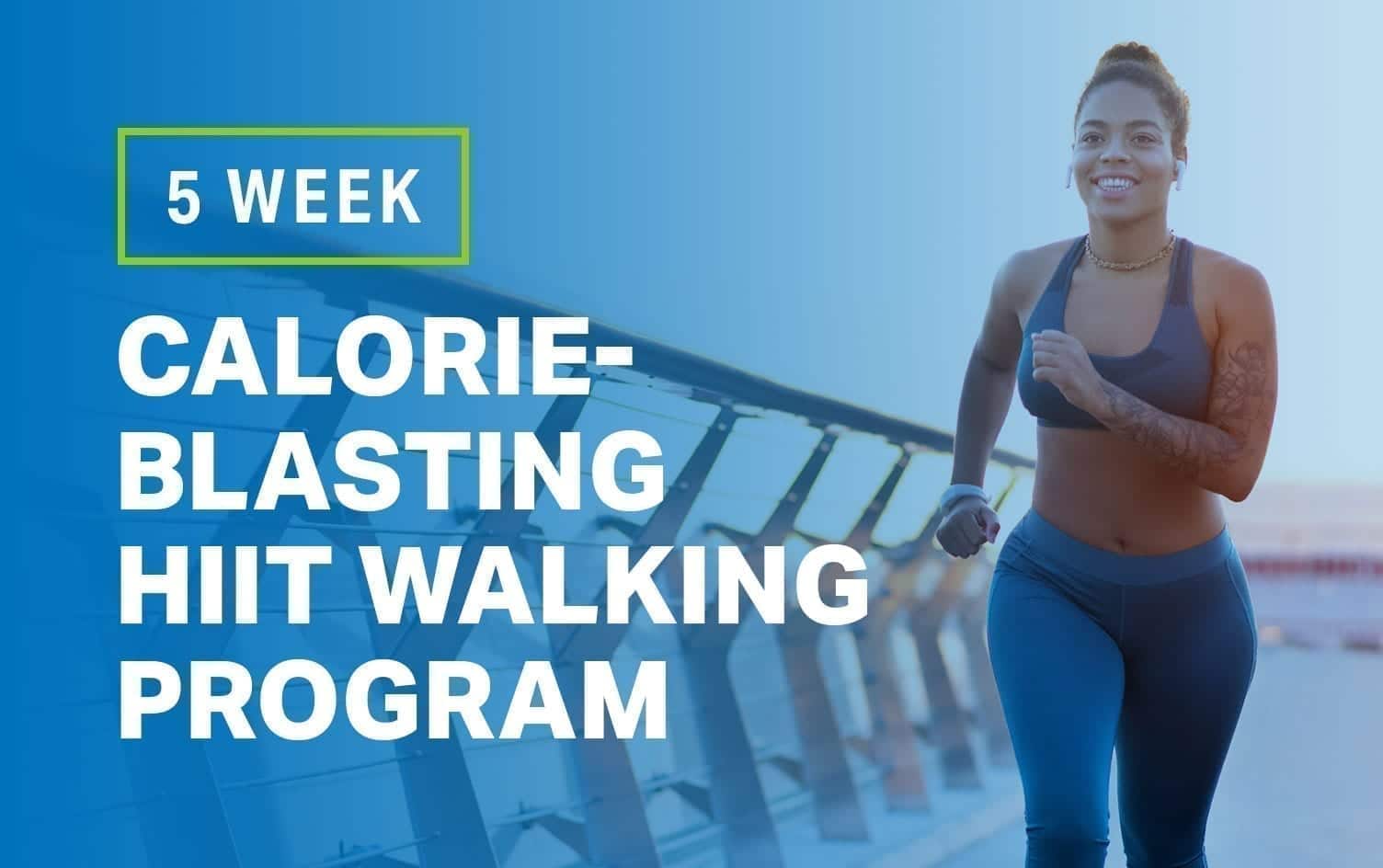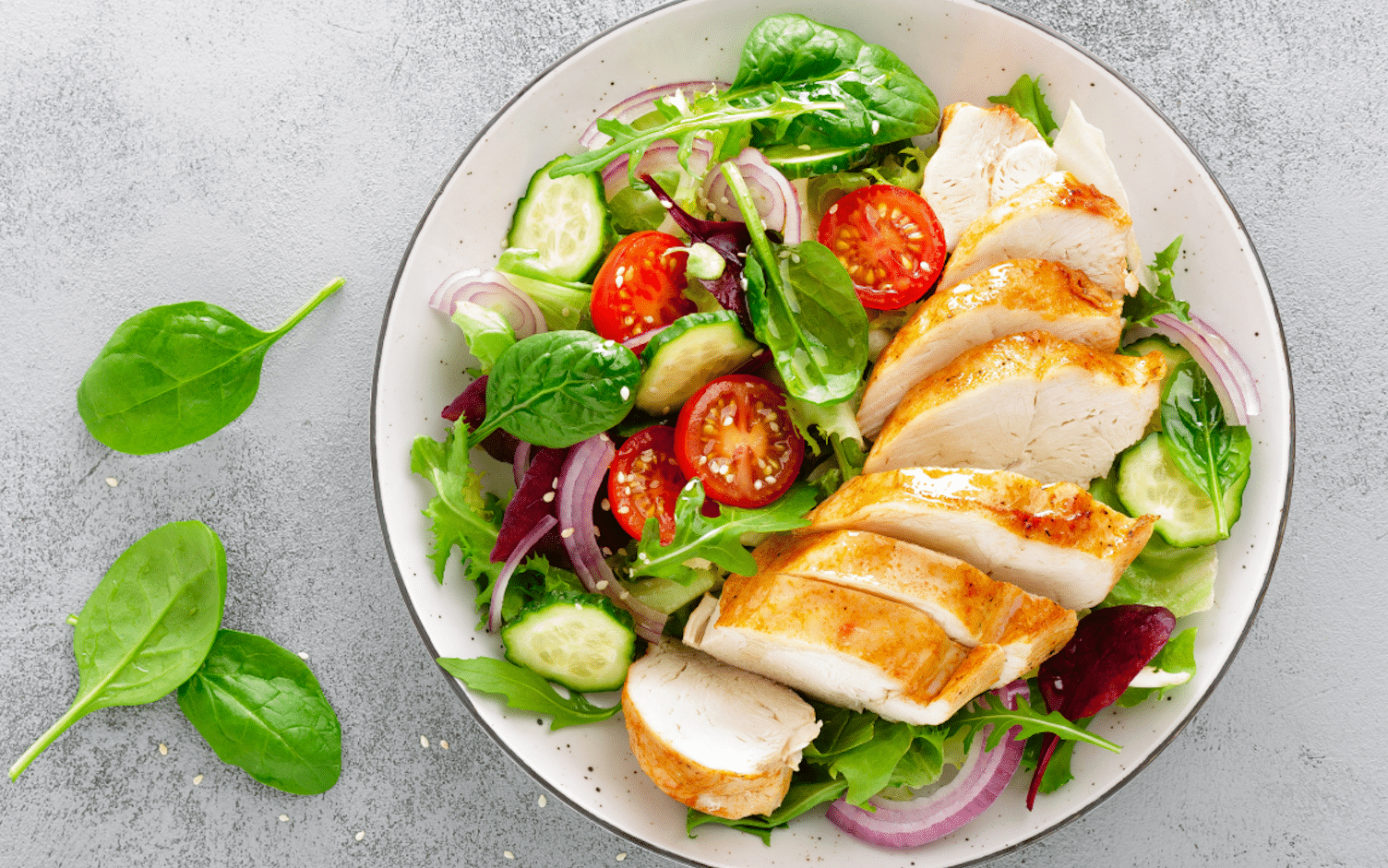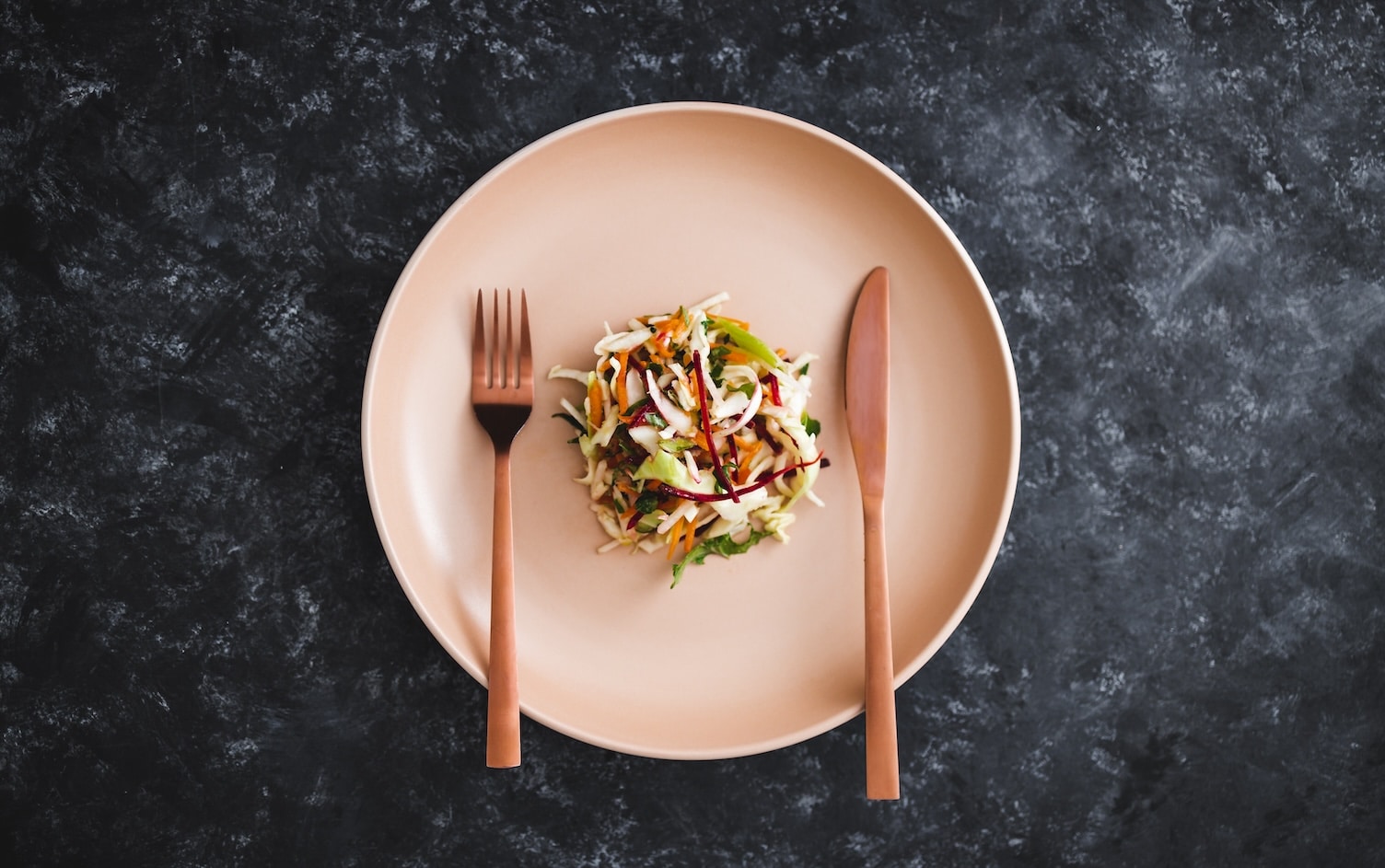High-intensity interval training (HIIT) is a great way to increase your cardiovascular endurance and burn more calories in a short amount of time. Including intervals in your walking routine helps keep you challenged, regardless of your ability level.
This five-week workout guide is designed to help you safely and gradually work your way up to a 5K, interval-style. You can always increase the duration or intensity of your workouts if you are more advanced and looking for a greater challenge.
MILEAGE GOAL
A 5K walk is approximately 3.1 miles, and while most don’t have a time requirement to finish, you may want to set a personal time goal for yourself, such as 45–60 minutes. On average, walking briskly means completing 1 mile in about 15 minutes — which is the general range this plan uses (and how we’ve calculated approximate weekly mileage). If you need more time to complete a mile (especially in the beginning) that’s to be expected. Improving your time per mile is a great way to gauge your progress as your fitness level improves with consistent training.
INTENSITY LEVELS

These intensity notes, which are based on your individual perceived exertion and fitness level, help you gauge your RPE level. A 9–10 should feel like an RPE level that is so intense you cannot sustain it for more than a few seconds, while a 1–2 should feel like almost no RPE at all. Very brisk, hard RPE is relative, as once you become more fit, what used to be hard will start to feel easier, so you can continue challenging yourself by pushing harder (either for a longer period of time, by increasing your speed for the same amount of time, or both). It’s easy to dial up your intensity by increasing your speed and/or amping up into a run or jog. Conversely, if you need to ease up, lengthen the steady pace and/or recovery windows.
Finally, remember to listen to your body. If you find you need recovery or rest time during your week, feel free to add it in as needed. If the weekly goal is too much, you may choose to shorten your time and/or repeat a week (this plan can be easily stretched into 6–7 weeks). Focus on progress, not perfection, as you work your way through this plan — and celebrate your victories each week. Treat yourself to a new audiobook, a pair of walking shoes or another reward of your choice for each weekly goal you achieve.

HIIT WALK AND STRETCH
Warm up at an easy pace for 3–5 minutes, then repeat these 5-minute intervals as indicated:
- Maintain steady pace (RPE 5) for 3 minutes, walk 1 minute at a brisk pace (RPE 7) then push as hard as you can at a very brisk pace (RPE 8–9) for 1 minute.
- Recover for the final 2–5 minutes at an easy pace.
STRETCHING AND CROSS-TRAINING
Stretching can be an important part of your walking routine to prevent injury. Perform a few, total-body stretches after your walk, such as these 5 Stretches to Improve Your Walks.
Similarly, while cross-training sessions are optional, adding in a few days of activities such as strength training (Suggested: 5 Strength Exercises All Beginners Should Know) can help you build your fitness and overall strength, all of which can help you reach your 5K goal feeling faster and stronger.
STEADY STATE WALK
During a steady state walk, you should maintain the same brisk pace. You should be breathing harder but still able to maintain a conversation (RPE 5–6).
Make progress every day while you work on fitness and nutrition goals, like walking more steps. Go to “Plans” in the MyFitnessPal app for daily coaching and easy-to-follow tasks to keep you motivated.




